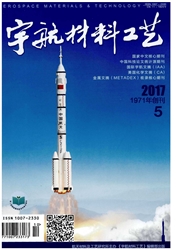

 中文摘要:
中文摘要:
SiC单晶片表面质量对其后续半导体器件的制造有很大影响,但其材料的高硬度和高脆性,使切片过程变得非常困难。本文在往复式电镀金刚石线切割装置上采用单因素和正交法进行了SiC单晶切割实验.研究了工件转速、线锯速率、工件进给速率、线锯磨损对晶片表面粗糙度的影响规律以及三维形貌特点。结果表明:附加工件旋转运动,晶片表面质量提高,划痕减少、深度变浅;线速增大、工件旋转速率增大或工件进给速率减小,表面粗糙度值减小;线锯磨损晶片表面粗糙度值增大。相对线速和线锯磨损,工件转速和工件进给速率对晶片表面质量及粗糙度的影响更大。应在综合考虑效率和线锯损耗的基础上合理确定切割参数,尤其是工件进给速率。
 英文摘要:
英文摘要:
Surface quality of SiC wafers has a great influence on its subsequent semiconductor device manufacturing, however, SiC cut processing is very difficult because of its high hardness and high brittleness. Based on reciprocating electroplated ters saw diamond wire saw cutting single-crystal SiC experiments and the combinations of sawing parameare designed by using the one-factor and the orthogonal feeding rate, method. The influences of work-piece rotating rate, wire and work-piece feeding rate and wire saw wear on wafers surface roughness and 3-d topography characteristic was studied. The results indicate that wafers surface quality improvement, and scratches reduce and becomes shallow depth when additional work-piece rotation movement; the surface roughness decreases with the work- piece rotating rate, wire saw rate, decrease of work-piece feeding rate, and the surface roughness increases with the wire saw wear; the influence is much more of work-piece rotating rate and work-piece feeding rate on the wafers surface quality and roughness compare with wire saw rate and wire saw wear; It should reasonably determine the cutting parameters, especially work-piece feed rate based on the comorehensivelv considered cutting efficiency and loss of wire saw.
 同期刊论文项目
同期刊论文项目
 同项目期刊论文
同项目期刊论文
 Surface roughness optimization in processing SiC monocrystal wafers by wire saw machining with ultra
Surface roughness optimization in processing SiC monocrystal wafers by wire saw machining with ultra Teaching-learning-basedoptimization with fuzzy grouping learning strategy for global numericaloptimi
Teaching-learning-basedoptimization with fuzzy grouping learning strategy for global numericaloptimi 期刊信息
期刊信息
